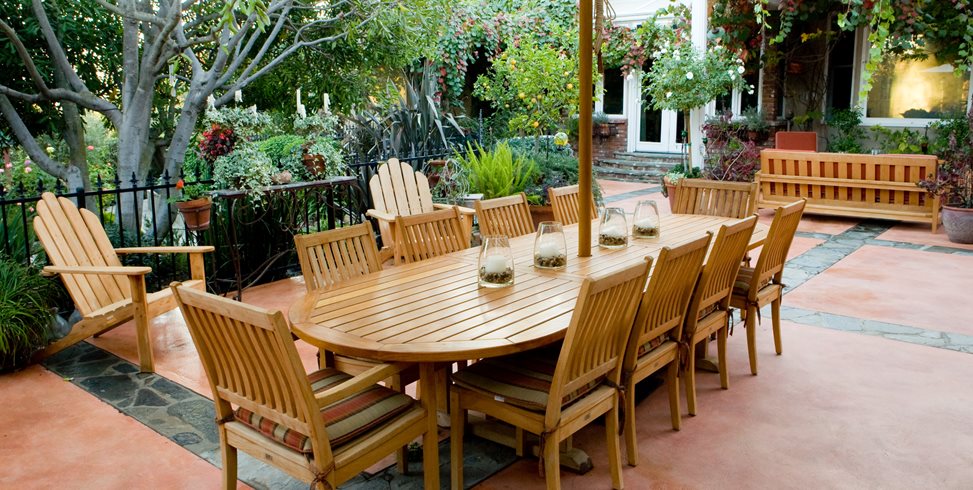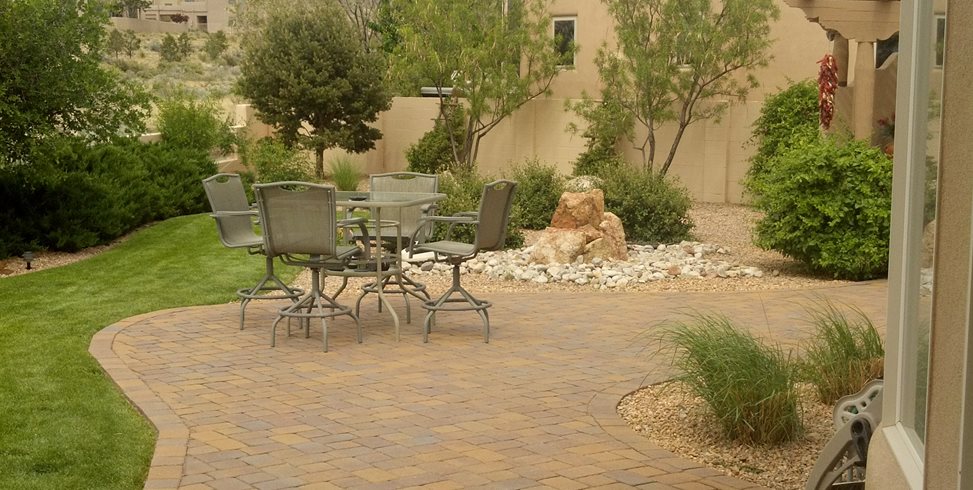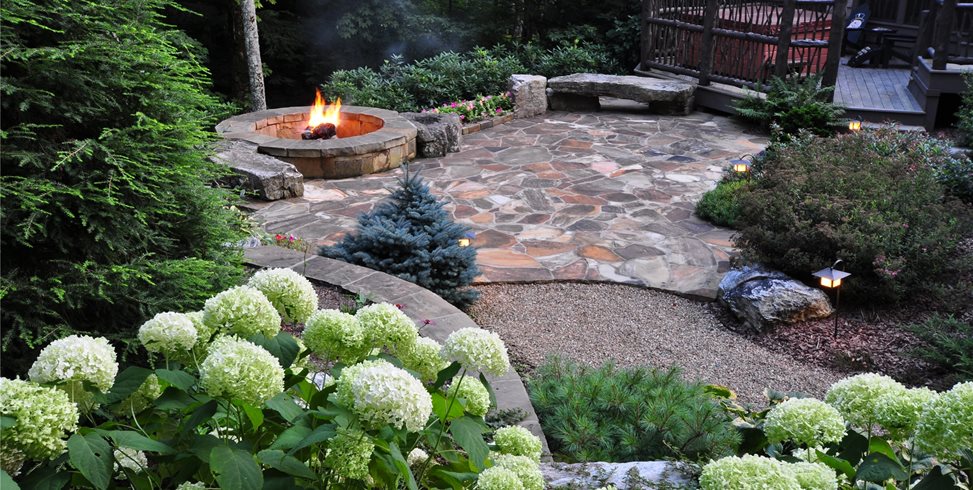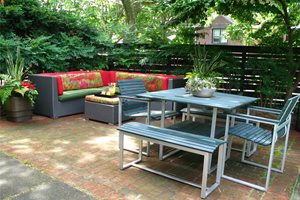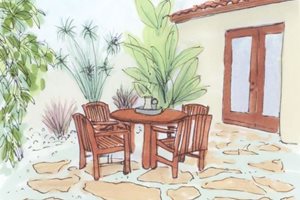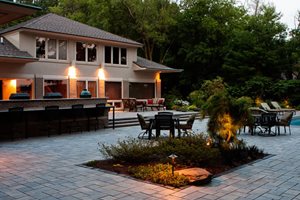Tips for Determining Patio Size
Get help deciding on your backyard patio dimensionsDetermining the size of your patio is crucial. Many homeowners end up with a patio that is either too small or too large. Patios that are too small feel cramped after adding furniture, planters and a grill. Patios that are too large lose their intimacy. If you take the time to determine the right measurements for your patio you will end up with a well-designed outdoor living area that you can use year-round for entertaining and relaxing.
Average Patio Dimensions
- Small bistro patio: 7 x 7 (144 square feet)
- Medium dining patio: 12 x 14 (168 square feet)
- Large entertaining patio: 18 x 20 (360 square feet)
Backyard Patio Dimensions
Learn how to calculate actual dimensions for a new patio based on the size of your furniture and your entertaining needs.
See Large Patios
See Small Patios
Finding the Right Patio Size
Here are three easy steps to help you discover the right patio dimensions:
Step 1:
Decide how you will use the patio.
- Will you be dining & cooking on the patio?
- Will you be relaxing around a fireplace or fire pit?
- Will you be reading a good book and enjoying the sunshine?
Often you can't determine a patio size without a full working knowledge of what will happen there. A good designer will know how much space is required to achieve your use goals for the patio and how standard minimum dimensions are used. These minimums are more important in smaller patios where it takes detailed space planning to ensure all the needs are met.
Often a professional will begin by organizing specific uses into the space. These uses may include a grilling area, a gathering zone, a fire pit, dining spot and other amenities associated with outdoor kitchens. The relationships of all these to one another are vital to predicting how the spaces connect across common ground that can be generally defined as "the patio".
Step 2:
Think about how many people you would like the patio to accommodate.
- Will just a few people be using the patio?
- Will you be hosting parties with many people?
Step 3:
Measure your yard to get an idea of how much space you have to work with.
- Think about how big your patio can be as well as the best placement in your yard.
Time / 01:04
Watch this video to get tips on patio design, including patio sizing and placement.
Patio Sizing Tips:
-
Concrete Network has a patio size chart to help you estimate a good size for your patio. It takes into consideration four typical patio furniture arrangements.
-
Buy your patio furniture first and arrange it where your patio will be. Use the space for a week or two, taking note of where people walk and the best spacing for the furniture. The size of your patio should be large enough to accommodate the furniture.
-
Don't forget walk around space. Add an extra 2-3 feet of paving around your patio furniture.
-
It is better to have a patio too large than too small.
-
Make sure the patio extends to all the individual amenities it serves.
-
Go larger if you have a drop off at the patio edge without railing to increase safety.
-
Orient the patio to exploit views both on and off site.
-
Integrate seatwalls into the patio to reduce the spatial demands of more furniture.
-
Expand the patio size to take advantage of shade structure protection as shadows move during the day.
-
Provide enough room for pool accessories if close to the water's edge.
-
Create small paper templates of furniture to test arrangements on your site plan.

 Backyards
Backyards
 Front Yards
Front Yards
